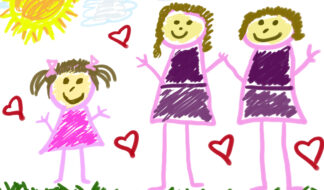by Jessica Carreras
Defining inclusion is tough. The dictionary tells us it's the act of being included, while our instincts speak in more societal terms. Inclusion, to us as human beings, is allowing everyone to be a part of something; recognizing that we're all parts of a whole. It's holding hands and singing, "We Are the World." It's never turning someone away because of their skin color, gender, disability or sexual orientation.
On Feb. 24 at the Detroit Institute of Arts, the Michigan Roundtable for Diversity and Inclusion hosted The Art of Inclusion, an event designed to bring people of faith together to talk about incorporating LGBT acceptance into congregations.
"An essential tenet of the Roundtable is that we have a passion for serving humanity," Michigan Roundtable President Tom Costello told a group of 75 sitting in the Crystal Gallery of the Detroit Film Theater. "And I guess in another way, we believe that each individual is valued as a whole person, a product of a creator, by whatever name you call him or her."
Another definition of inclusion.
I looked around the room, recognizing a few faces from various LGBT organizations. Triangle Foundation Executive Director Alicia Skillman. Judy Lewis, the head of the Jewish Gay Network. Rev. Henry Brinker, interim pastor of First Congregational Church in Imlay City, Mich.
But the scene struck me as very eclectic. I saw older, married couples. Young gay men. I made quick friends with a transgender man and his fiance sitting next to me.
Ah, so this is what inclusion is, I thought. It's a transgender man, a lesbian, an atheist straight girl and two elderly couples, sitting at a table together talking about including LGBTs in the faith community. It's hearing all voices as though they are equally important, even though we each have very different lives.
None of us could have expected what the night would hold. This was no ordinary discussion, but a trip to the DIA's Contemporary Art Gallery, where we looked at several paintings and discussed what they meant in the context of inclusion.
We studied "Creek," a painting by gay artist Robert Raushenberg, and how his lack of "the self" in his art reflected society's unwillingness to accept homosexuality. We looked at Kehinde Wiley's modern update of the painting "Officer of the Hussars" and discussed its portrayal of the often-unrecognized black heroes of our society. We talked about "Black Absence" by Ghada Amer – a comment on our common unwillingness to look at people closely before judging them.
Over several hours, I had discussions with this eclectic group about paintings and about our own experiences; discussions deeper and more telling than I've had with friends I've known for years.
I learned that Max Kirn, from Royal Oak, is afraid that a visit to a public bathroom will result in someone calling him out on whatever gender they think he is or isn't. I learned that Dorothy Sullivan loathes being known only as her husband Paul's wife. "Don't call me Mrs. Paul Sullivan," she warned. I learned that Flo Cross, though seemingly steadfast in her beliefs, doesn't think that something is right just because it has always been that way. "Just because it's tradition doesn't mean it's good," she told us, looking at Wiley's painting of a black man on a stallion wearing a wife beater and Timberland boots and comparing it to the original or a white captain decked out in army regalia.
The Michigan Roundtable event created a space for discussion that would never happen otherwise between people of different religions, races, ages and sexual orientations. Indeed, the platform of the event was about including LGBT people in congregations. But what surfaced was much larger than just inclusion in religion; it was a step we all took toward understanding each other and our differences.
That's what inclusion is: opening the doors to our minds enough so that ideas other than our own are able to get in. It isn't who we let sit next to us on a bus or what kind of relationships we "tolerate." That is to say, it's not just what we do on the exterior that makes us inclusive. It's allowing ourselves the opportunity to be more than just our own experiences on the inside. And maybe it takes a little art to make that happen.
Visit the Michigan Roundtable for Diversity and Inclusion's Web site at http://www.miroundtable.org to learn more about upcoming events.









